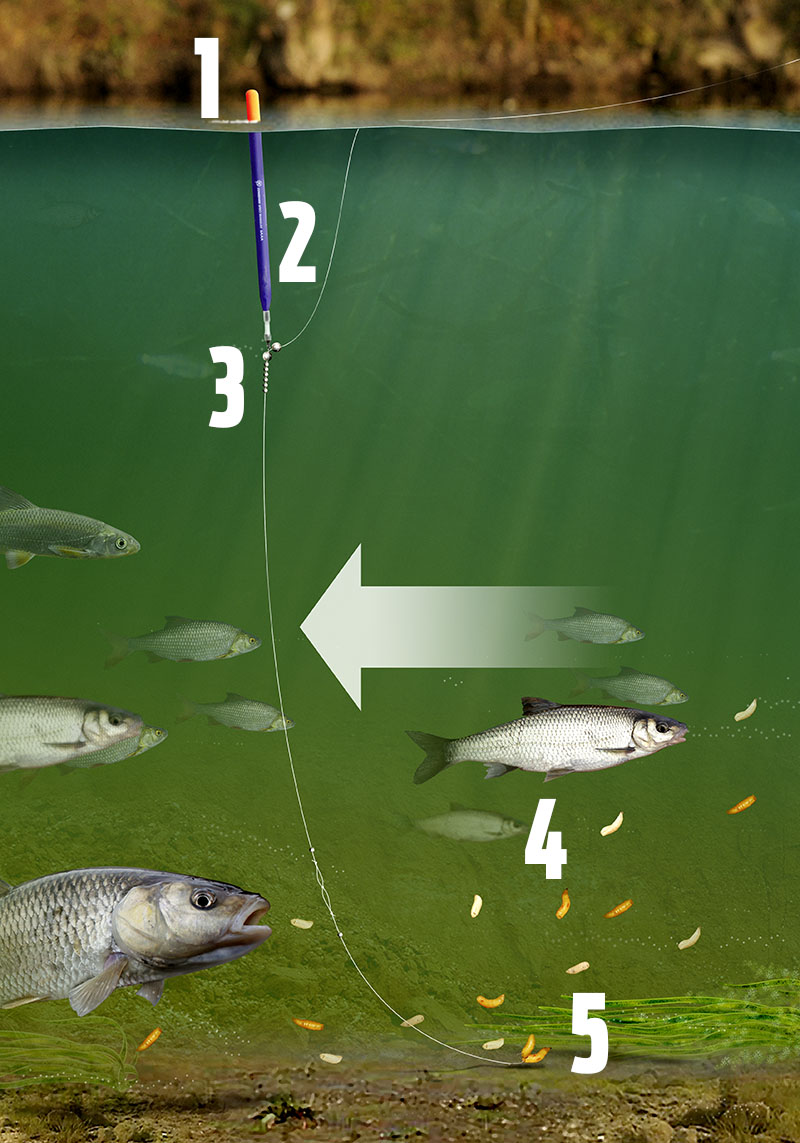Chub fishing rigs | River waggler rig
Chub are bold feeders, and will often sit in among smaller fish like dace, bleak and gudgeon.
For anglers, this means that one rig can be used to catch a real mix of species, and the waggler is by far and away the top attack for running water.
Versatility is the key trait of the waggler, allowing you to change from fishing a few feet deep one minute (if the fish show signs of coming off bottom), to dragging a bait along the riverbed, through to casting just inches away from far-bank tree cover.
1) Leave some tip showing
Because you will be running the float well down the peg, you need to be able to see it at range, and although the thick waggler has a highly-visible tip, don’t add too much shot to dot it down.
Ideally, leave most of the orange tip on show because bites will be very positive when fishing a bait at the full pace of the river.
2) Pick the right float
Should the swim be less than 4ft deep, a short very buoyant float known as a Specimen Waggler will be needed. It looks more like a pellet float designed for carp fishing on commercials. This float will not be dragged under easily and can ride uneven currents with ease.
For a standard deeper swim, look at a straight peacock waggler of 3AAA to 4SSG, depending on the distance needed to cast.
If you plan on fishing off bottom, think about an insert waggler with a thinner tip taking two or three AAA shot.
3) Shot down the line
In a shallow swims you’ll not need lots of weight down the line to get the bait to the bottom.
Two or three No8 shot evenly spread will do the job. If the peg is deeper, these can be pushed together to make a small bulk if needed, especially if bleak are grabbing the bait on the way down.
4) Regular loosefeed
Chub and dace will only be tempted into having a go if bait is constantly being introduced into the swim.
That means loosefeeding by hand or with a catapult, putting in a dozen or so maggots or grains of hemp with a few casters mixed in. Don’t break the feeding cycle and discipline yourself to keep the bait going in.
5) Fish at dead depth
If you set the float overdepth you’ll be in for a session of striking every time it is dragged under by the riverbed.
Spend a fair bit of time running the rig down the swim and making minute adjustments until the hookbait is just trundling along the bottom. To catch gudgeon or ruffe you will need to drag the bait overdepth, though!

